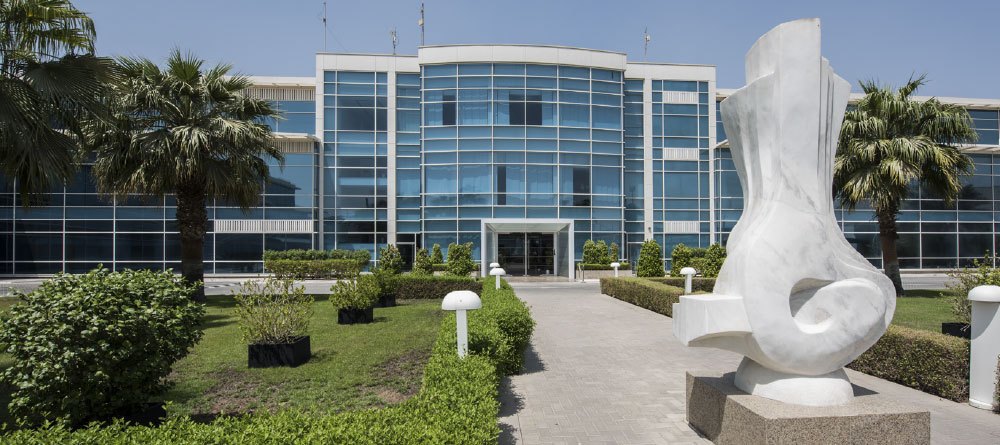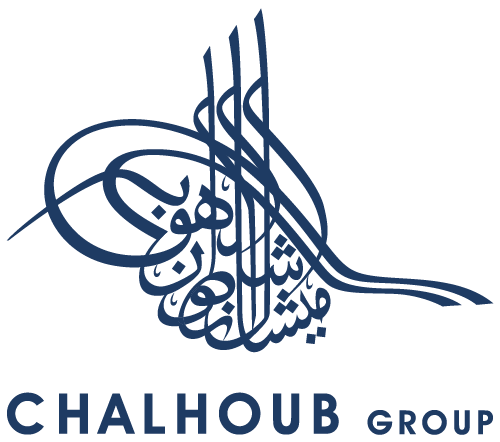Success Story
Centralizing the Chalhoub Group’s Treasury Operation

ABOUT THE CHALHOUB GROUP
The Chalhoub Group has been the leading partner for luxury across the Middle East since 1955. As an expert in retail, distribution and marketing services based in Dubai, the Group has become a major player in the beauty, fashion and gift sectors regionally. With a growing workforce of more than 12,000 people, implemented in 14 countries, and a network of over 650 retail stores, the Group’s success is attributed to its most valued asset: highly skilled and dedicated teams. By demonstrating commitment to sustainable business, the Chalhoub Group was awarded in 2015, for the third consecutive year, the CSR Label from the Dubai Chamber of Commerce and has been accepted as a new member of the United Nations Global Compact Community.
Based on an interview with James Adams, Group Treasurer, and Shiban Patel, Treasury Analyst, Chalhoub Group
The benefits of centralized Treasury operations – and of in-house banks – are today of increasing interest to more and more successful corporations in the Middle East. This case study explains why the Chalhoub Group built a new Treasury department, outlines how it was set up and automated, and summarizes the benefits which are now being achieved. It concludes with a few recommendations for others who are considering similar developments.
Why Build a Group Treasury?
About two years ago, the Dubai based Chalhoub Group’s sustained business success and growth caused the CFO and CEO to decide to establish a Group Treasury department. The primary reasons for doing so were to take advantage of the economies of scale in the management of Foreign Exchange risk and of cash, and to improve the visibility and mobilization of cash, in what was a typically decentralized corporate structure.
At the time, there was no centralized Treasury function at the Chalhoub Group. Chalhoub’s management team did not have clear, up-to- date visibility of the organization’s overall cash balances, or of the group’s financial risk due to the rapid pace of growth. Some entities were running cash surpluses, whilst others were overdrawn. Accordingly, the senior management team decided to initiate a project to create a new central Treasury operation, at the corporate head office in Dubai.
Initiating the Group Treasury Project
The internal resources for establishing a professional Treasury operation from scratch were limited, so Chalhoub commissioned one of the Big Four consulting firms to perform the necessary research and analysis. The firm reviewed the ‘as is’ situation, and proposed a target operating model for Treasury. Chalhoub then built a team to establish the new department under these parameters. A key feature of the model was the implementation of a modern Treasury Management System (‘TMS’) to underpin operations, and to provide automated support for core activities, with the required security, control and transparency, and with high grade audit quality.
The project team consisted of a cross-functional panel from the consulting firm and the Chalhoub Group. For the system selection and implementation processes, this also included Chalhoub IT and Legal specialists. There was a full time project manager to drive things forward, and senior management were actively involved in monitoring the direction and progress of the project, and to ensure that it was fully supported throughout the organization.
The Target Operating Model
The target operating model identified four key business objectives for the new Group Treasury:
- Centralized cash management.
- Centralized FX risk management.
- Establishing best practice governance.
- Achieving the operating benefits of automation.
The structure of the new department that was created now consists of seven professionals, including legal, IT and accounting.
The Technology Investment
The team built the business case for the technology investment to secure a budget for the project. The business case needed to demonstrate a tangible return on the investment, as well as the intangible benefits of enhanced control and financial risk visibility. The business case was based upon the benefits of the better use of cash through pooling and cash concentration, and of improved FX transaction pricing.
Chalhoub’s Banking Network
At an early stage, Chalhoub reviewed and updated its banking relationships, to implement the quite complex cash pooling arrangements needed, and to set up the required credit facilities and structures. The Chalhoub Group now works with 19 different banks, operating about 200 bank accounts in 15 different currencies. Chalhoub has three core Partner Banks, and also works with local banks that can provide multiple branches to service the Group’s retail business.
Robust SWIFT bank communications are outsourced to Kyriba, who are a SWIFT bureau.
Cash Management Benefits
The centralized structure gives Treasury real-time visibility over the Group’s network of bank accounts. Chalhoub has successfully set up cash pooling arrangements wherever permitted, meaning that they are now effectively using cash surpluses in some parts of the Group to finance shortfalls in others. This innovation has generated valuable interest savings, by minimizing external borrowings, and by enabling surpluses to be aggregated for investment at the best available rates.
FX Benefits
The central Treasury now has full visibility of the Group’s Foreign Exchange exposures. Treasury Analyst Shiban Patel elaborates: ‘we are now able to net many exposures internally, wherever feasible eliminating the need to buy and/or sell in the FX markets – and thus avoiding the related costs. We can easily identify the remaining exposures, and we hedge them in the markets in compliance with Treasury policy. As we aggregate individual exposures internally, we need less frequent market interventions, and we are able to command finer prices for our transactions.’
Treasury Control
The Kyriba TMS provides the required automation support for Treasury’s STP workflows, ensuring that bank connectivity and treasury management work together seamlessly, in compliance with treasury policy. The system’s security and control facilities will ensure that system access rights are fully controlled, to protect the use and reporting of sensitive Treasury information.
In-House Banking
„Chalhoub Group Treasury has established an active in-house bank function to automate the organization’s key cash and FX management functions – which is quite a change from the highly decentralized situation of just two years ago.“
— James Adams, Group Treasurer of Chalhoub Group
James Adams continued, „In-house banking is quite a new concept among corporations in the Gulf Region and the Middle East in general, where decentralized business models have generally been the norm. The Chalhoub Group’s senior management team initiated and drove through the Treasury project to enable the Group to enjoy the benefits and efficiencies of international best practice Treasury operations.“
Future Growth Plans
There are numerous possibilities for Chalhoub Treasury to extend its use of the TMS, subject of course to a positive cost/benefit analysis for each alternative. These include automated bank account management (‘BAM’), reconciliation, payments management and financial accounting.
Summary
There are many private companies in the Middle East that have grown rapidly over the past decade, but lack a clear approach to Treasury management. In some instances, this has created inefficiencies and several challenges for financial risk management, particularly in the current environment in which greater levels of automation and control are increasingly accepted as best practice. Chalhoub has taken the initiative by successfully creating a value-adding central treasury operation.
James Adams adds: ‘If your senior management team decides that establishing a new Group Treasury is the best way forward, I offer the following recommendations to those responsible for the project:
- Take the time to research, define and document all the business requirements from the outset, so that the project can be accurately planned, measured and managed. This should minimize delays and errors.
- Do not underestimate the human resources needed for success! Work with your team to identify the necessary resources to complete the project as planned.
- Consider using an external advisor to provide the expertise you do not have in-house, to validate your planning, and to add value as specifically needed.
- Ensure that your detailed planning includes clearly defined targets and deadlines, so that you can measure progress accurately, can identify potential problems and delays, and can define and initiate any necessary adjustments and corrections.
- Ensure that you organize sufficient resources (including legal) to complete the demanding administrative processes required for setting up cash pools and borrowing facilities without delaying the project.
- Secure the backing and participation of senior management, to provide authority for the significant process change involved in implementing a new central Treasury.’
About James Adams
James is the Group Treasurer at the Chalhoub Group, a leading partner for luxury across the Middle East, expert in retail, distribution and marketing services. He is responsible for all aspects of Treasury, and has recently led several projects to establish the new function within the firm.
Prior to joining Chalhoub in 2014, James was a Senior Manager in the Deloitte Treasury Advisory team based in London. He has worked with Group Treasurers and CFOs at a variety of companies in the UK, Europe, Middle East, North America, Russia and Asia. His particular areas of interest are Treasury Systems, Risk Management and Treasury Strategy.
James is a Full Member of the Association of Corporate Treasurers (MCT) and a Chartered Management Accountant.
About Shiban Patel
Shiban is currently a Treasury Analyst at the Chalhoub Group. He has worked closely with the Group Treasurer to set up the new, centralized Treasury department within the Group. Whilst primarily looking after Front and Middle Office activities, he has also been involved in managing several projects ranging from implementing systems, to advising on Treasury best practice policy and governance.
Prior to joining the Chalhoub Group in 2014, Shiban worked at ConocoPhillips and Phillips 66 in London, where he played an integral role in setting up the downstream company’s Treasury team as the oil and energy giant went through a demerger.
Shiban is also a member of the Association of Corporate Treasurers and has completed the certificate in International Treasury Management (CertITM).

ABOUT THE CHALHOUB GROUP
The Chalhoub Group has been the leading partner for luxury across the Middle East since 1955. As an expert in retail, distribution and marketing services based in Dubai, the Group has become a major player in the beauty, fashion and gift sectors regionally.
With a growing workforce of more than 12,000 people, implemented in 14 countries, and a network of over 650 retail stores, the Group’s success is attributed to its most valued asset: highly skilled and dedicated teams.
By demonstrating commitment to sustainable business, the Chalhoub Group was awarded in 2015, for the third consecutive year, the CSR Label from the Dubai Chamber of Commerce and has been accepted as a new member of the United Nations Global Compact Community.











